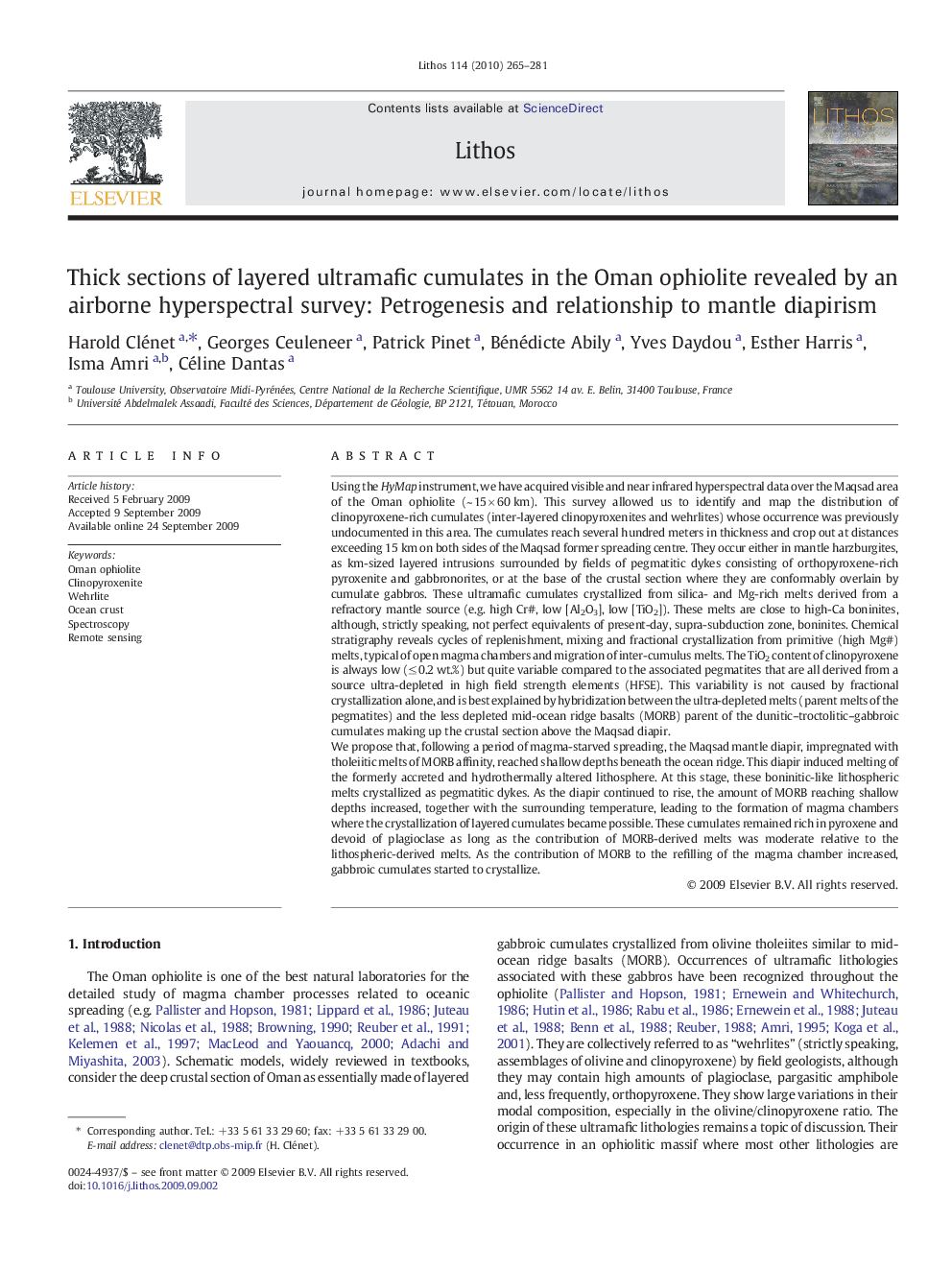| کد مقاله | کد نشریه | سال انتشار | مقاله انگلیسی | نسخه تمام متن |
|---|---|---|---|---|
| 4717154 | 1638736 | 2010 | 17 صفحه PDF | دانلود رایگان |

Using the HyMap instrument, we have acquired visible and near infrared hyperspectral data over the Maqsad area of the Oman ophiolite (~ 15 × 60 km). This survey allowed us to identify and map the distribution of clinopyroxene-rich cumulates (inter-layered clinopyroxenites and wehrlites) whose occurrence was previously undocumented in this area. The cumulates reach several hundred meters in thickness and crop out at distances exceeding 15 km on both sides of the Maqsad former spreading centre. They occur either in mantle harzburgites, as km-sized layered intrusions surrounded by fields of pegmatitic dykes consisting of orthopyroxene-rich pyroxenite and gabbronorites, or at the base of the crustal section where they are conformably overlain by cumulate gabbros. These ultramafic cumulates crystallized from silica- and Mg-rich melts derived from a refractory mantle source (e.g. high Cr#, low [Al2O3], low [TiO2]). These melts are close to high-Ca boninites, although, strictly speaking, not perfect equivalents of present-day, supra-subduction zone, boninites. Chemical stratigraphy reveals cycles of replenishment, mixing and fractional crystallization from primitive (high Mg#) melts, typical of open magma chambers and migration of inter-cumulus melts. The TiO2 content of clinopyroxene is always low (≤ 0.2 wt.%) but quite variable compared to the associated pegmatites that are all derived from a source ultra-depleted in high field strength elements (HFSE). This variability is not caused by fractional crystallization alone, and is best explained by hybridization between the ultra-depleted melts (parent melts of the pegmatites) and the less depleted mid-ocean ridge basalts (MORB) parent of the dunitic–troctolitic–gabbroic cumulates making up the crustal section above the Maqsad diapir.We propose that, following a period of magma-starved spreading, the Maqsad mantle diapir, impregnated with tholeiitic melts of MORB affinity, reached shallow depths beneath the ocean ridge. This diapir induced melting of the formerly accreted and hydrothermally altered lithosphere. At this stage, these boninitic-like lithospheric melts crystallized as pegmatitic dykes. As the diapir continued to rise, the amount of MORB reaching shallow depths increased, together with the surrounding temperature, leading to the formation of magma chambers where the crystallization of layered cumulates became possible. These cumulates remained rich in pyroxene and devoid of plagioclase as long as the contribution of MORB-derived melts was moderate relative to the lithospheric-derived melts. As the contribution of MORB to the refilling of the magma chamber increased, gabbroic cumulates started to crystallize.
Journal: Lithos - Volume 114, Issues 3–4, February 2010, Pages 265–281